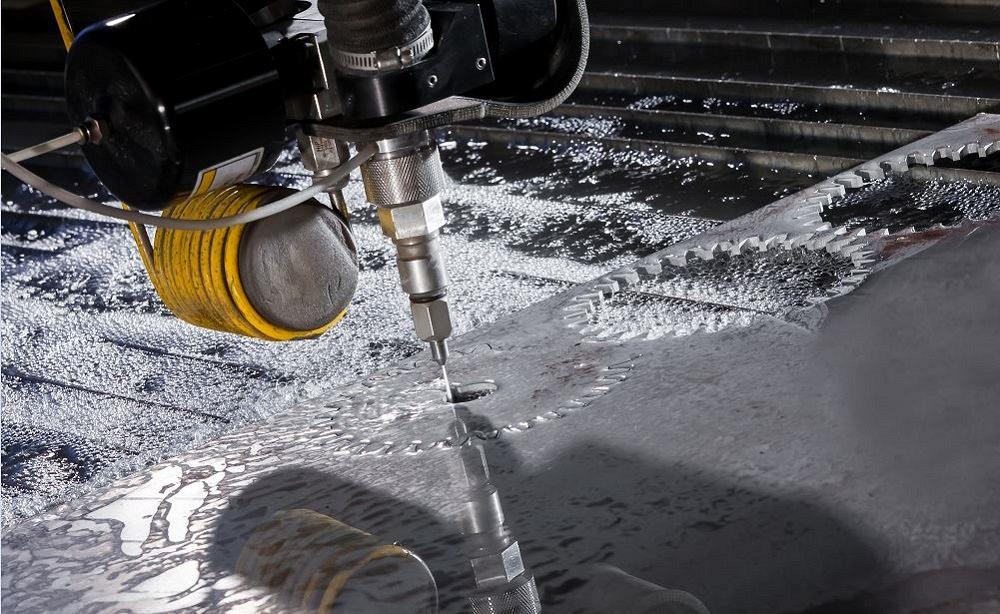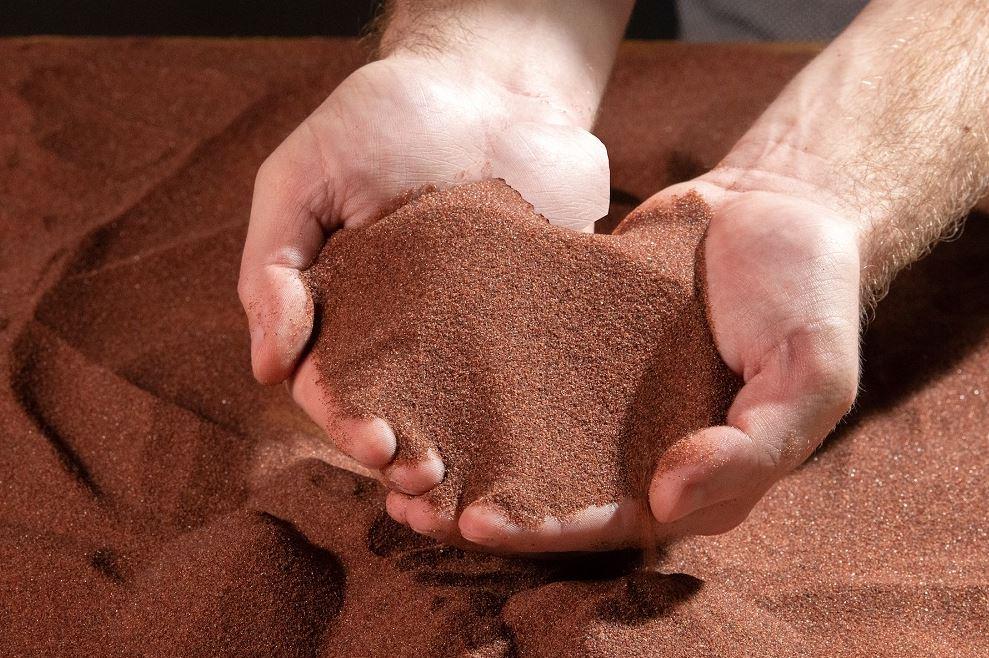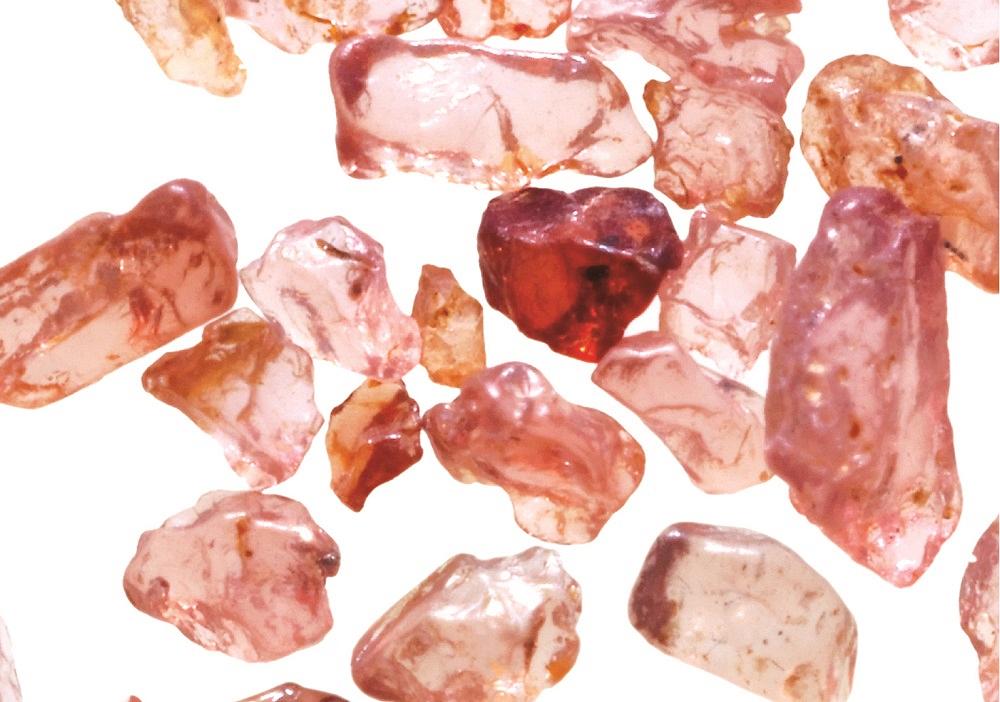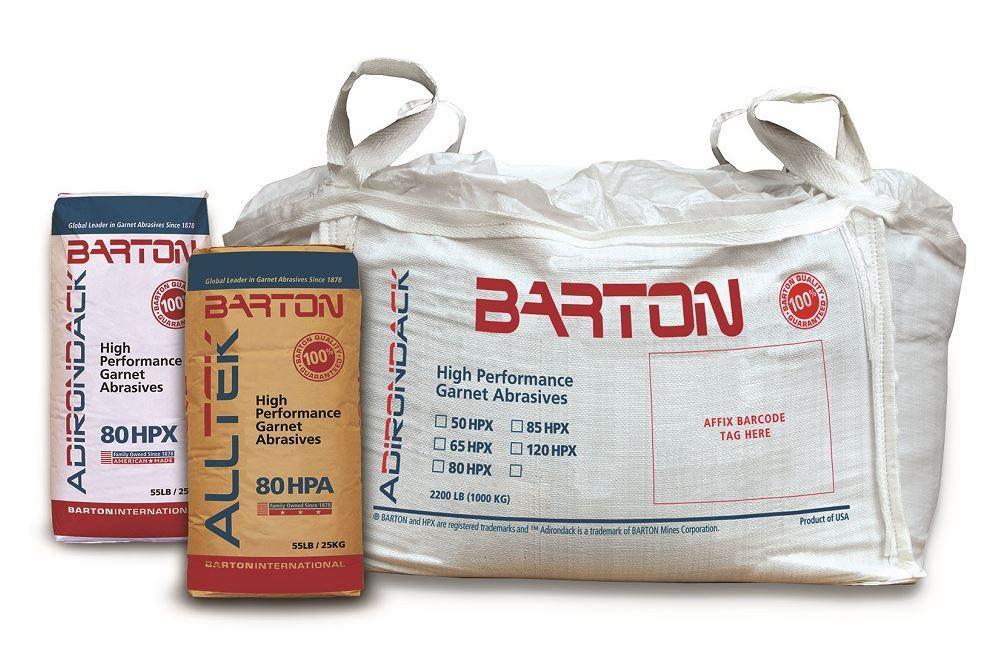Editor-in-Chief
- FMA
- The Fabricator
- FABTECH
- Canadian Metalworking
Categories
- Additive Manufacturing
- Aluminum Welding
- Arc Welding
- Assembly and Joining
- Automation and Robotics
- Bending and Forming
- Consumables
- Cutting and Weld Prep
- Electric Vehicles
- En Español
- Finishing
- Hydroforming
- Laser Cutting
- Laser Welding
- Machining
- Manufacturing Software
- Materials Handling
- Metals/Materials
- Oxyfuel Cutting
- Plasma Cutting
- Power Tools
- Punching and Other Holemaking
- Roll Forming
- Safety
- Sawing
- Shearing
- Shop Management
- Testing and Measuring
- Tube and Pipe Fabrication
- Tube and Pipe Production
- Waterjet Cutting
Industry Directory
Webcasts
Podcasts
FAB 40
Advertise
Subscribe
Account Login
Search
Best practices for managing waterjet abrasive
Efficient waterjet cutting isn't just about the cutting head and the pump
- By Dan Davis, Joe Morris, and Stephen Podnorszki
- March 4, 2024
- Article
- Waterjet Cutting

Waterjets need abrasive to effectively cut various thicknesses of metal. Knowing more about the actual garnet abrasive and how to properly handle it can help to streamline waterjet operations. OMAX
Most people in the fabricating industry have a good idea of how waterjets work. A high-pressure pump generates an ultrahigh-pressure water stream that is focused through a 0.015- to 0.060-in. mixing tube in a CNC-driven cutting head. In abrasive waterjet cutting, garnet is pulled into the water stream, and when that ultrahigh-pressure stream of water mixed with garnet exits the cutting head, the abrasive is propelled at speeds that exceed Mach 3, successfully eroding away almost any material in its way.
While the equipment, particularly the cutting heads and high-pressure pumps, typically dominate most conversations about waterjets, it’s the consumable—the garnet—that does the actual cutting. Garnet has been the abrasive of choice for waterjet cutting since the first commercial abrasive waterjet cutting system was sold in the early 1980s.
Knowing more about the abrasive can lead to better and more consistent waterjet cutting results. Let’s cut to it.
What Does a Fabricator Need to Know About the Waterjet Abrasive?
Abrasive waterjets can cut steel more than 1 ft. thick. Garnet abrasive is widely used to cut not only metals but also glass, marble, granite, stone, ceramic tile, composites, wood, and plastics. The most common grade used in waterjet cutting is 80 mesh, which is suitable for cutting a wide range of materials. To achieve a faster cutting speed, or when cutting material thicker than 2 in., a coarser abrasive (say, 50 mesh) is suitable For a narrower kerf and more precise cut, a finer abrasive (say, 120 or 150 mesh) might be the best choice.
All waterjet abrasives need to demonstrate hardness, density, and toughness. But perhaps the most important qualities are consistency in particle size distribution, shape of the particle, and purity of the abrasive. Continuity of these characteristics allows for consistent cutting performance over time.
The most common garnet used in waterjet cutting is known as alluvial garnet. At some point during its geological life, this garnet was liberated from the parent stone through erosion, tumbled in a riverbed, and deposited on a beach or riverbank. That erosion and tumbling results in a rounded grain.
However, for specialty cases, hard rock garnet might be the best abrasive for the job. Hard rock garnet is mined from a quarry where it is crushed and separated from the host rock. Because it never went through an erosive process, hard rock garnet retains the sharp angular shape that makes it more effective.
For instance, a fab shop cutting very thick, hard, or brittle materials (such as titanium, thick steel, or glass) might use the hard rock garnet abrasive because it can cut deeper and more quickly than the alluvial alternatives. The hard rock garnet also can deliver a superior edge finish with less burring and minimal taper. Barton recommends 120-HPX hard rock garnet for cutting glass and composites because it minimizes the chances of breakage while piercing. When cutting composites, 120 HPX also minimizes the chances of delamination.
Despite the more aggressive nature of the hard rock garnet abrasive, it doesn’t damage the waterjet’s mixing chamber and mixing tube. These components are engineered to stand up to the use of this type of garnet, as well as the much more common alluvial material.
It should be noted that aluminum oxide is sometimes used as an abrasive when waterjet cutting hard ceramics or similar materials. It does the job, but aluminum oxide significantly taxes the waterjet’s mixing chamber and mixing tube, dramatically shortening the life of each. Because of this, aluminum oxide is used in very limited instances.
How Is the Abrasive Delivered?
Waterjet abrasives are typically packaged in 55-lb. bags or 2,200- or 4,400-lb. bulk bags.
By far, the 55-lb. bags are the most popular package type. These robust paper bags, comprising a plastic liner sandwiched by high-strength paper, stand up to shipping and handling while protecting the garnet abrasive from humidity.
Bulk bags, known in the industry as flexible intermediate bulk containers (FIBCs), weigh 1 to 2 metric tons and typically are made from woven polypropylene. Often These packages are designed to be handled mechanically by forklift trucks, cranes, or hoists. The Flexible Intermediate Bulk Container Association (FIBCA) publishes FIBC safe handling guidelines and other resources useful to shops buying abrasive in this type of package.
How Is the Abrasive Introduced to the Waterjet?
Garnet abrasive is fed to the waterjet from a pressure pot to the abrasive regulator, which controls the abrasive feed to the cutting head. Standard pressure pots have capacities from 110 to 600 lbs. Larger pressure pots with 2,200- or 4,400-lb. capacity can be purchased for longer uninterrupted cuts.
Typical feed rates for waterjets range from 0.75 lbs./min. to 2.4 lbs./min., depending on pump capacity, orifice size, and mixing tube size. A general rule of thumb is that a shop will use approximately 1 lb. of abrasive per minute while waterjet cutting.
Customers looking to minimize the labor associated with the handling of 55-lb. bags may choose to install a transfer hopper over the top of a standard pressure pot. This allows the customer to use bulk bags to fill the hopper with up to 4,400 lbs. Switching to bulk bags minimizes the risk of a piece of a paper bag getting caught in the abrasive feed, potentially causing a clog.
How Should the Abrasive Appear?
An operator will want to ensure that there are no foreign materials mixed in with the abrasive. Additionally, any evidence of wetness, such as clumping, in the material would indicate a potential clogging problem. Extra care should be taken when using material from a damaged bag, as the garnet could have been contaminated with foreign material. Spilled garnet should not be swept up from the floor and used for cutting.
Poorly graded garnet could include excessive fines (particles that fall outside of the target particle size distribution). These fines are most evident when a bag is poured into a pressure pot and a dust plume emerges. While the dust is an inconvenience for the technician operating the waterjet, it is a potential threat to the machine’s cutting ability.
How Should the Abrasive Be Stored?
The garnet abrasive should be stored indoors and in a dry area, which typically means away from the waterjet. As most waterjet operators can testify, when piercing, the waterjet ends up spraying water beyond the table.
To keep the garnet free from contaminants, the abrasive bags should be stored away from other processes that produce excessive dust, chips, or other byproducts that could contaminate the abrasive. For instance, pallets of garnet stored near a blast room might wind up with the much coarser abrasive used in the blasting process clinging to the outside of the packaging of much finer waterjet abrasive. That much-larger abrasive could inadvertently be introduced into the waterjet’s garnet delivery system, which will result in clogs and unnecessary downtime. It also could wreak havoc on the waterjet’s cutting performance.
Dust should be blown off bags that have been stored before opening, and a sharp knife should be used to open paper bags to avoid pieces of paper getting mixed in with the abrasive. To further protect the pressure pot from contamination, it should be topped with a trash screen.
How Should the Operator Remove Spent Abrasive From the Waterjet Tank?
It’s time to remove spent abrasive from the waterjet tank when the abrasive levels in the tank rise toward the bottom of the slats on which the workpieces rest. The frequency of this task depends on the cutting activity on the waterjet.
Some waterjets have integrated garnet removal systems. These systems involve pumps and catch basins that typically are affixed to the waterjet, preventing them from use on other tables and taking up shop floor space. Even with an automated system, the waterjet has to be shut down periodically to remove drops and the abrasive that the system failed to reach.
On the opposite side of the spectrum is manual cleaning of the waterjet tanks. Typically, the waterjet is shut down and the slats are removed. The spent garnet can be removed by shovel, a small excavator, or by hiring a vacuum truck service.
A portable abrasive collection system, which can be operated while the waterjet is still operating without removal of the slats, has become a popular manual extraction alternative. This device, sold exclusively by Barton International, uses an extraction wand powered by a standard pressure washer that can remove up to 3,000 lbs. of abrasive per hour.
Are There Special Considerations Regarding Spent Abrasive Disposal?
Garnet itself is a nonhazardous material, but local municipality waste regulations need to be followed when disposing of spent abrasive. Municipal, state, and federal officials are concerned with metals specified within the Resource Conservation and Recovery Act as being potentially dangerous to humans. These metals include arsenic, barium, cadmium, chromium, lead, mercury, selenium, and silver.
That’s why a toxicity characteristic leaching procedure (TCLP) test should be done before disposing any abrasive. This test alerts the owner if any heavy metals are present. The test also acts as proof that any spent abrasive is comprised of nonhazardous materials.
About the Authors

Dan Davis
2135 Point Blvd.
Elgin, IL 60123
815-227-8281
Dan Davis is editor-in-chief of The Fabricator, the industry's most widely circulated metal fabricating magazine, and its sister publications, The Tube & Pipe Journal and The Welder. He has been with the publications since April 2002.

Joe Morris
Vice President, Sales and Marketing
(800) 741-7756

Stephen Podnorszki
Director, Waterjet Parts
(800) 741-7756
Related Companies
subscribe now

The Fabricator is North America's leading magazine for the metal forming and fabricating industry. The magazine delivers the news, technical articles, and case histories that enable fabricators to do their jobs more efficiently. The Fabricator has served the industry since 1970.
start your free subscription- Stay connected from anywhere

Easily access valuable industry resources now with full access to the digital edition of The Fabricator.

Easily access valuable industry resources now with full access to the digital edition of The Welder.

Easily access valuable industry resources now with full access to the digital edition of The Tube and Pipe Journal.
- Podcasting
- Podcast:
- The Fabricator Podcast
- Published:
- 04/16/2024
- Running Time:
- 63:29
In this episode of The Fabricator Podcast, Caleb Chamberlain, co-founder and CEO of OSH Cut, discusses his company’s...
- Trending Articles
Tips for creating sheet metal tubes with perforations

Are two heads better than one in fiber laser cutting?

Supporting the metal fabricating industry through FMA

JM Steel triples capacity for solar energy projects at Pennsylvania facility

Omco Solar opens second Alabama manufacturing facility

- Industry Events
16th Annual Safety Conference
- April 30 - May 1, 2024
- Elgin,
Pipe and Tube Conference
- May 21 - 22, 2024
- Omaha, NE
World-Class Roll Forming Workshop
- June 5 - 6, 2024
- Louisville, KY
Advanced Laser Application Workshop
- June 25 - 27, 2024
- Novi, MI





























